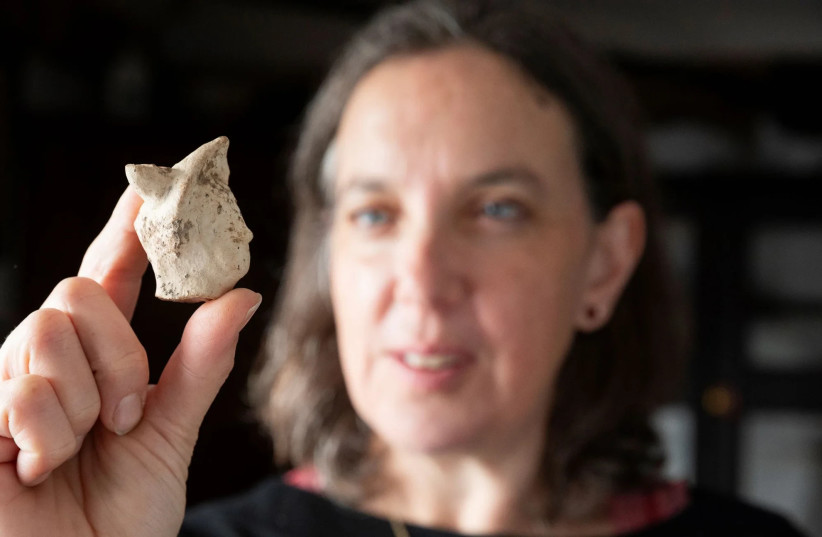Archaeologists excavating a Roman settlement, used between the 1st and the 3rd century, in Kent discovered a figurine head of the ancient Roman god Mercury, the National Trust announced in a press release on Friday.
Mercury is the Roman messenger god, thought to be the counterpart to the ancient Greek deity Hermes.
The figurine, made of pipeclay, is considered to be incredibly rare, according to experts examining the piece. Experts believe that the pipeclay originated from Gaul, or modern-day France, and was imported to Britain.
Almost all Roman deity figurines found in Britain have been of female goddesses, particularly of Venus, making the Mercury statue an exceptionally rare find.
Nathalie Cohen, National Trust archaeologist explained: “Our excavations at Smallhythe revealed previously undiscovered Roman activity, dating from the 1st-3rd centuries AD, where we found tiles stamped with the mark of the Roman fleet (the Classis Britannica), ceramics including an intact pot, and evidence for buildings, boundary features and pits – which provide tantalizing clues to the nature of this riverside community.

“But to come across a head of a figurine of Mercury, in pipeclay, is incredibly rare. Just 5cm tall, the head is clearly visible as Mercury, with his winged headdress. We sadly did not find the remaining part of the figurine.”
Dr Matthew Fittock, an expert on ceramic figurines in Roman Britain, commented: “Pipeclay figurines were mainly used by civilians for private religious practice in domestic shrines and occasionally in temples and the graves of often sick children.
“Rather than pieces being discarded because they were broken, there is evidence to suggest that deliberately breaking some figurine heads was an important ritual practice, whereas whole figurines are usually found in graves. Few single pipeclay heads are known in Britain, some of which may have been votive offerings. Finds like this at Smallhythe provide an extremely valuable insight into the religious beliefs and practices of the culturally mixed populations of the Roman provinces.”
Figurines like the one found had been worshipped in the homes of Roman villagers and the Roman elite.
More about the archaeology site
The figurine was located in the National Trust’s Smallhythe Place site which has been exposed to several excavations over the last few years.
Smallhythe Place was once the site of the most significant Royal shipbuilding centers in medieval England, located near the river Roth.
